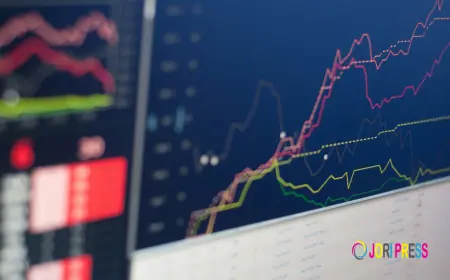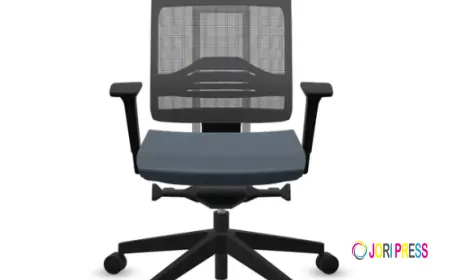Fashion Face Mask Market to Reach New Heights
According to TechSci Research, the global Fashion Face Mask Market was valued at USD 1.50 billion in 2024 and is expected to reach USD 3.81 billion by 2030, growing at an impressive CAGR of 16.81% during the forecast period.

Introduction
The global fashion landscape has undergone a radical transformation in the past few years, with accessories gaining new functional dimensions. One of the most notable examples of this evolution is the Fashion Face Mask Market. What was once an essential item for health protection during the COVID-19 pandemic has now become a statement piece in personal styling.
According to TechSci Research, the global Fashion Face Mask Market was valued at USD 1.50 billion in 2024 and is expected to reach USD 3.81 billion by 2030, growing at an impressive CAGR of 16.81% during the forecast period.
Initially, the surge in demand was a direct response to the pandemic, where masks were worn for medical necessity. However, the market quickly diversified as consumers began seeking designs that reflected their personalities, cultural values, and lifestyles. This shift from a purely utilitarian product to a fashionable accessory opened the door for fashion brands, small enterprises, and independent designers to explore innovative materials, patterns, and functionalities.
Today, the fashion face mask industry blends aesthetics with performance, offering products that protect against pollutants and pathogens while allowing the wearer to make a style statement. With sustained consumer interest—driven by urban pollution concerns, eco-conscious living, and the desire for customization—this market is poised for continued growth far beyond its pandemic origins.
Market Evolution – From Necessity to Lifestyle
The transformation of face masks from medical devices to lifestyle products is rooted in three key phases:
- Health Necessity Phase (2020–2021):
Global lockdowns and mask mandates created an unprecedented surge in demand, with consumers prioritizing safety over style. - Adaptation Phase (2021–2022):
Fashion labels and small businesses recognized the opportunity to integrate design into mask production. This period saw the emergence of colorful fabrics, themed prints, and reusable options. - Lifestyle & Personal Expression Phase (2022 onwards):
Masks became tools of self-expression, with designs tailored to match outfits, showcase affiliations, or display artistic creativity. Functionality expanded to include anti-pollution filters, UV protection, and ergonomic fits.
Download Free Sample Report - https://www.techsciresearch.com/sample-report.aspx?cid=28587
Market Drivers
- Heightened Health Awareness
The pandemic brought personal hygiene and respiratory health into sharper focus. Even as public mandates ease, consumers—especially in urban and high-pollution areas—continue to invest in masks for daily use.
- Rising Pollution Levels
In cities across Asia, Africa, and parts of Europe, air quality concerns have made masks a year-round necessity. Anti-pollution fashion masks have gained a dedicated consumer base.
- Sustainable Living Movement
Reusable and washable masks align with the growing eco-conscious consumer mindset. Organic cotton, bamboo fiber, and recycled polyester are now widely used.
- Social Media & Celebrity Influence
High-profile endorsements and styling tips from influencers have turned masks into fashion essentials. Instagram, TikTok, and Pinterest play a vital role in promoting mask trends.
- Technological Advancements in Textiles
Innovations such as antimicrobial coatings, moisture-wicking fabrics, and nano-filtration layers have enhanced mask functionality without compromising style.
Emerging Trends
- Eco-Friendly Materials
Organic cotton, hemp blends, bamboo fabrics, and recycled fibers are now standard offerings. Biodegradable packaging is gaining traction as brands respond to sustainability demands.
- Customization & Personalization
Digital printing, embroidery, and consumer-driven design platforms allow individuals to create masks that match outfits, display logos, or carry meaningful messages.
- Multi-Functionality
Fashion masks with replaceable filters, UV protection, and cold-weather insulation are on the rise, appealing to diverse climates and lifestyles.
- Cultural & Artistic Expression
Designs inspired by local art, heritage motifs, and cultural patterns are helping brands cater to niche audiences while promoting identity pride.
- Smart Mask Technology
Some premium brands are exploring masks with built-in sensors for air quality monitoring, Bluetooth connectivity for calls, and voice clarity enhancements.
Industry Key Highlights
- Market Size (2024): USD 1.50 billion
- Forecast Market Size (2030): USD 3.81 billion
- CAGR (2024–2030): 16.81%
- Primary Growth Driver: Blending of aesthetics and functionality in mask design.
- Dominant Distribution Channel: Offline retail, due to tactile shopping preferences and trust in physical product evaluation.
- Fastest Growing Region: North America, fueled by disposable incomes, designer mask demand, and e-commerce growth.
- Top Material Trends: Organic cotton, bamboo fiber, and recycled polyester.
- Notable Consumer Shifts: Preference for reusable, customizable, and environmentally friendly products.
Regional Analysis
North America – Innovation Leader
North America is the fastest-growing region, with consumers prioritizing style, comfort, and health benefits in masks. Strong e-commerce platforms, celebrity influence, and rapid product innovation are key drivers.
Asia-Pacific – Pollution-Driven Demand
High pollution levels in cities like Delhi, Beijing, and Jakarta sustain demand for masks with anti-pollution filtration. K-fashion and J-fashion trends heavily influence design aesthetics.
Europe – Sustainability-Centric Market
European buyers lean toward ethical production and premium sustainable materials, with brands emphasizing craftsmanship and eco-responsibility.
Competitive Analysis
The Fashion Face Mask Market is highly competitive, with a mix of global brands and niche designers.
Key Strategies Adopted:
- Material Innovation – Introducing breathable, skin-friendly fabrics with filtration capability.
- Collaborations – Partnering with artists, fashion houses, or influencers to launch exclusive collections.
- Brand Differentiation – Strong storytelling around sustainability, cultural heritage, or luxury appeal.
- Omnichannel Presence – Combining offline retail dominance with online convenience.
Major Players:
- Vogmask – Known for high-performance anti-pollution masks with distinctive prints.
- Airpop – Focuses on ergonomic design and filtration efficiency.
- FREKA – Luxury brand emphasizing craftsmanship and design.
- Cambridge Mask Co – Popular for combining military-grade filtration with style.
- RZ Mask – Specializes in masks for outdoor sports and industrial environments.
- Respro – Known for cycling-specific anti-pollution masks.
Future Outlook
The global fashion face mask market will continue to grow beyond its pandemic-driven origins due to pollution concerns, sustainability trends, and personal expression demands.
Key Future Developments Expected:
- Integration of Smart Features – Health monitoring, voice clarity tech, and connectivity.
- Expansion into Emerging Markets – Increased adoption in Africa, Latin America, and Southeast Asia.
- Designer Collaborations – Limited-edition runs with luxury labels and streetwear brands.
- Circular Economy Practices – Recyclable masks and take-back programs.
- Stronger Branding as Fashion Accessories – Masks positioned alongside sunglasses, hats, and scarves as style essentials.
10 Benefits of the Research Report
- Detailed market size and growth forecast to support strategic planning.
- Insight into emerging trends shaping the industry.
- Competitive landscape analysis with key player strategies.
- Regional breakdown to identify high-potential markets.
- Distribution channel assessment for market entry optimization.
- Consumer behavior insights to refine product development.
- Technological trend analysis to support innovation strategies.
- Sustainability outlook and eco-friendly opportunities.
- Risk and challenge assessment for mitigation planning.
- Customization opportunities to align the report with specific business needs.
The Fashion Face Mask Market has successfully transitioned from a temporary health requirement to a lasting segment in the global fashion industry. Its growth is now anchored in pollution protection, personalization, sustainability, and style integration.
With consumers seeking to align their purchases with aesthetic preferences, ethical values, and lifestyle needs, fashion masks are no longer seen as an obligation but as an opportunity for creative expression. As technology merges with design and brands adopt eco-conscious practices, this market is set to expand further, creating exciting opportunities for innovators and investors alike.
Contact Us-
TechSci Research LLC
420 Lexington Avenue, Suite 300,
New York, United States- 10170
M: +13322586602
Website: www.techsciresearch.com
What's Your Reaction?
 Like
0
Like
0
 Dislike
0
Dislike
0
 Love
0
Love
0
 Funny
0
Funny
0
 Angry
0
Angry
0
 Sad
0
Sad
0
 Wow
0
Wow
0

















































